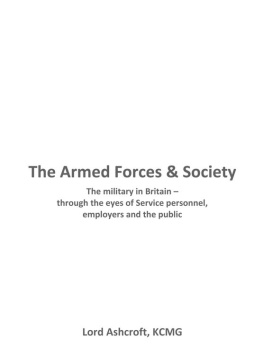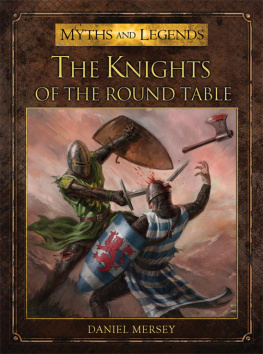I approached the Chief of the Defence Staff, General Sir David Richards, with the idea for this project in early 2011. In particular I sought his permission to carry out focus groups and a large-scale survey among Service personnel.
Sir David kindly agreed to the plan, and the research was subsequently organised under the auspices of his deputy, General Sir William Rollo. His staff at the Ministry of Defence worked with my own research team to develop questionnaires and discussion guides, and co-ordinated the organisation of 16 focus groups among Army, RAF, Royal Navy and Royal Marines personnel throughout the UK. The Defence Analytical Services Agency distributed our survey to some 25,000 Service personnel around the world (though none currently deployed on operations).
I met the costs of this exercise. In addition, I pledged 5 to Forces charities for each completed questionnaire. As a result of the very positive response from Service personnel, I am pleased to say that four excellent organisations ABF The Soldiers Charity, The RAF Benevolent Fund, The Royal Navy & Royal Marines Charity, and The Victoria Cross & George Cross Association have received a total of 45,600.
I am very grateful to General Richards, General Rollo, Anthea Lemmon at the Ministry of Defence, Lisa Carey of DASA, the Commanding Officers who allowed us to hold focus groups on their establishments, and Service men and women of all ranks who took part in the project. I particularly appreciate the confidence they placed in me, and my team, by allowing us extraordinary (I believe, unprecedented) access to defence personnel and by not seeking to constrain our questioning.
My sincere thanks also to Major General Anthony Cucolo, Colonel John Radke, and the personnel and veterans of the US Army, Navy, Air Force, Marine Corps and Coast Guard who contributed to the American end of the study.
Finally, I should make clear that while the Ministry of Defence has given valuable support in conducting the research, responsibility for the interpretation of the results, and the conclusions drawn, lies with me. Unless specifically attributed elsewhere, the views expressed in this report are mine.
When British combat troops withdraw in 2014, their operation in Afghanistan will have lasted thirteen years. During that time, as a result of their commitments in that country, as well as Iraq, Libya and throughout the world, our Armed Forces have been in the public eye for longer and to a greater degree than at any time since the Second World War.
This year, we mark thirty years since our Forces liberated the Falkland Islands from invasion.
By the end of 2015, some 17,000 of our Service personnel will have been made redundant. Most of them will be looking for new civilian careers at a time when jobs are hard to come by.
For all of these reasons, it is an appropriate time to take stock of our relationship with our Armed Forces and the men and women who serve in them. How do we in Britain see our military? Do we think Service personnel, and former personnel, get the recognition we believe they deserve? What is the perspective of those currently serving in the Forces, and those who have recently done so? What impressions do employers have of the kind of person they would be taking on if they hired someone leaving the Services?
To explore these questions with the kind permission of the Chief of the Defence Staff, General Sir David Richards, and organisational help from the Ministry of Defence I have conducted a unique independent survey of military personnel, together with focus groups of members of the Army, Royal Air Force, Royal Navy and Royal Marines. Research was also carried out among former Service personnel, the general public, and those responsible for recruitment in small and medium sized businesses (which provide the bulk of jobs). Further focus groups among personnel in the US Armed Services and a poll of the American public have offered an instructive comparison for the way public support can find tangible expression.
The purpose of this work is not to ask whether the government does enough for the troops, whether public resources are allocated in the right way, or to assess the provision available to serving or former personnel. That is a separate debate. Here I am interested the perceptions of the Forces and wider society about the relationship that exists between them. There is more to a society than its government.
Not surprisingly, we found public support for the military to be very high, both in absolute terms and in comparison to other popular British institutions like the NHS and the BBC. Service personnel felt this to be the case, and that support had increased in recent years; indeed those who had served longest often said public esteem for the Forces was higher than they had ever known it. However, Service personnel felt as most of the public readily admitted that most people outside the military know little or nothing about day-to-day life in the Forces. Some of those we spoke to in more senior ranks were concerned that, since the improvement in public support was down to greater visibility in recent years, so it might begin to wane after current missions ended.
Also not surprisingly, the public had a very high regard for serving personnel, though they tended to think many of them probably joined in the first place for want of any other option. When speaking about individual members of the Forces people would usually mention, before very long, what they regarded as the very high risk of their being injured or killed. In the poll, more than nine out of ten thought it was common or very common for personnel leaving the Forces to have some kind of physical, emotional or mental health problem (though personnel themselves did not seem to share this view). It was also the publics strong impression that official provision for those with very serious injuries, such as the loss of a limb, must be inadequate, since they seemed to have to rely on charities for their care. In turn, some personnel were concerned that although the public view of Service personnel was mainly characterised by pride and respect, the profile of charities like Help For Heroes and the Wootton Bassett repatriation ceremonies both of which personnel admired and appreciated greatly had combined to create a situation whereby sympathy had come to play a significant part in the public attitude to the Forces. Gratitude for their work was appropriate, as was appreciation of the hardships they endure and the personal risks they take, but the last thing members of the Forces wanted was for people to feel sorry for them.
There have rightly been moves in recent years to encourage personnel to wear their uniform in public outside ceremonial occasions. Some are still reluctant to do this, but most of those who do so have encountered a positive response from the public. More than half of all personnel had been approached by strangers offering thanks and support, and some had been bought drinks or been offered discounts in shops or other businesses.
Shockingly, though, more than one in five members of the Forces said they had experienced strangers shouting abuse at them while wearing their uniform in public in the UK in the last five years. Nearly one in twenty said they had experienced violence or attempted violence. Forces personnel, of all people, can take care of themselves but it is absolutely unacceptable for those who serve to be treated in this way.
Those responsible for these incidents naturally represent a tiny minority of the population. Goodwill towards Service personnel is abundant, though people are often unsure how it can be expressed appropriately. In our survey, two thirds of the American public said they had personally thanked a member of the Armed Forces or could see themselves doing so. This compared to just over a quarter of the public in Britain. Of those in Britain who said they could not imagine doing this, more than half said this was because they would be embarrassed, or they thought the person in uniform would be embarrassed. But the serving personnel we spoke to were usually pleased and encouraged when people took the trouble to speak to them not to ask about their experiences, which they quite understandably do not want to discuss, but to offer a quiet word of thanks and support. It is something we could do more often.














